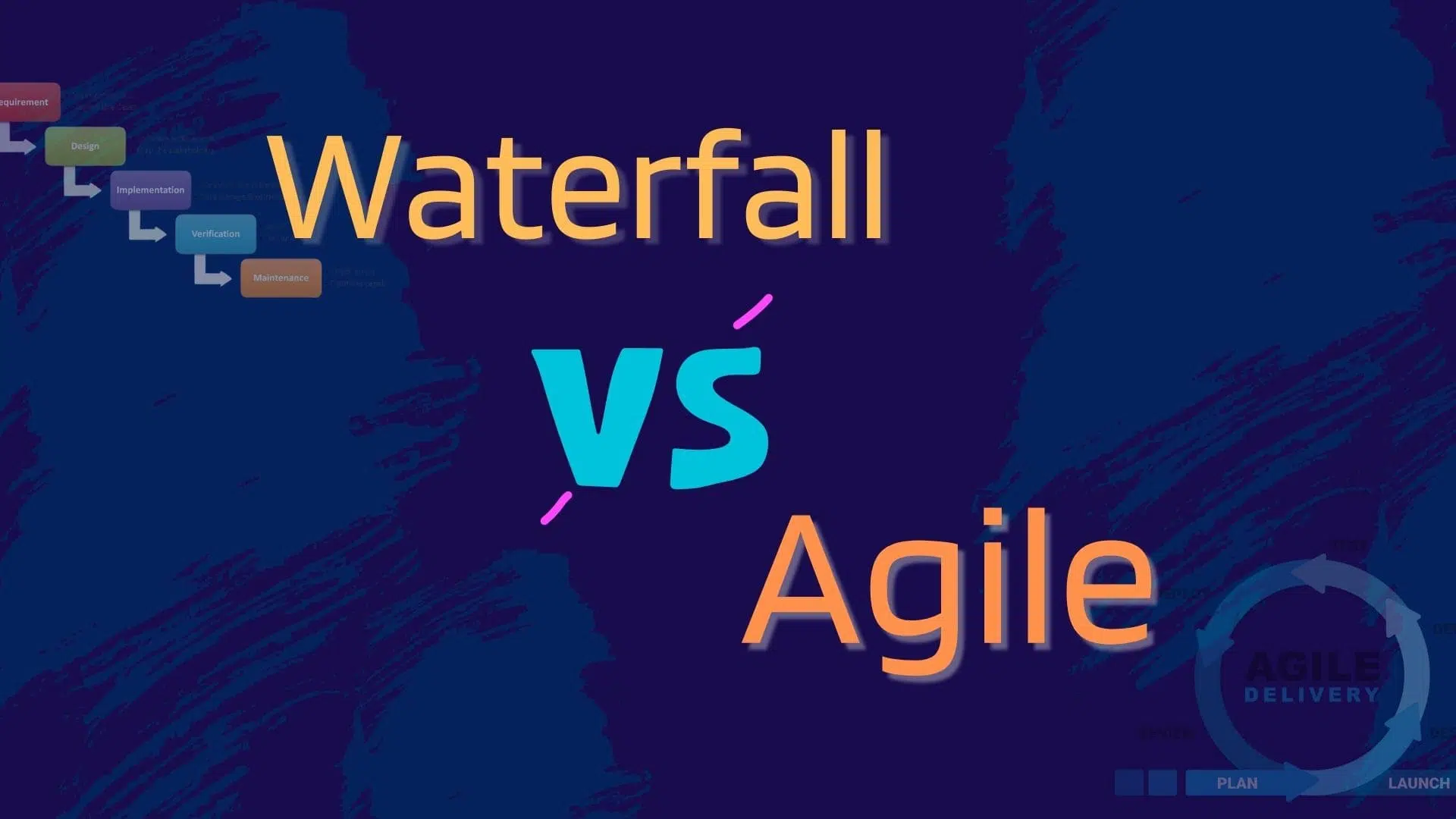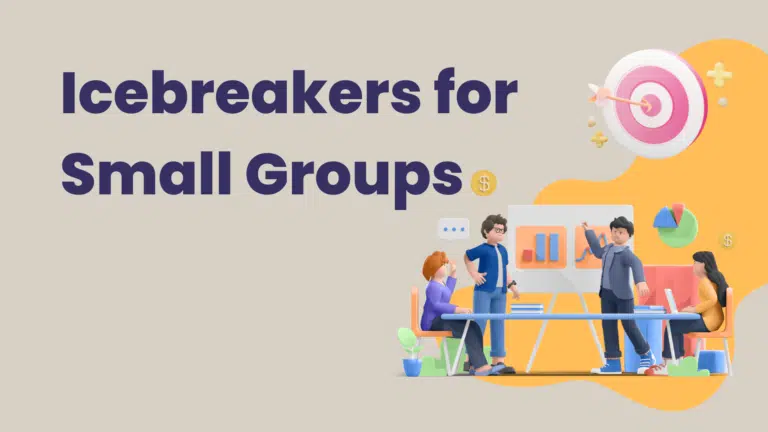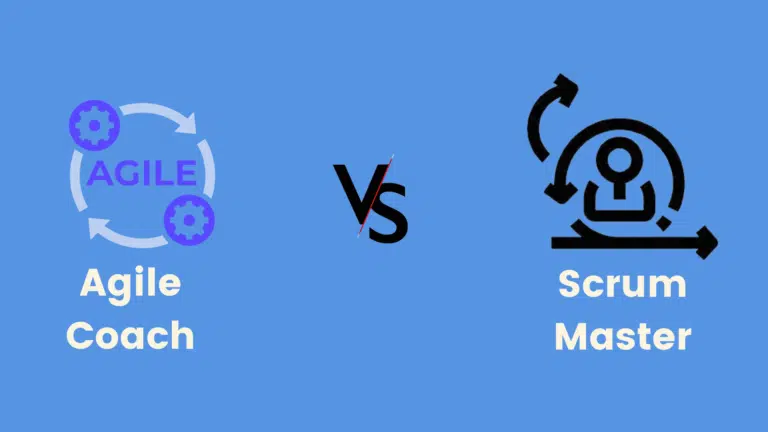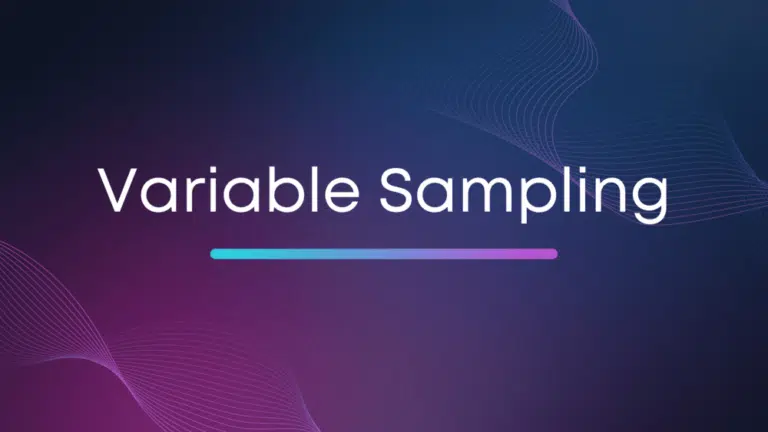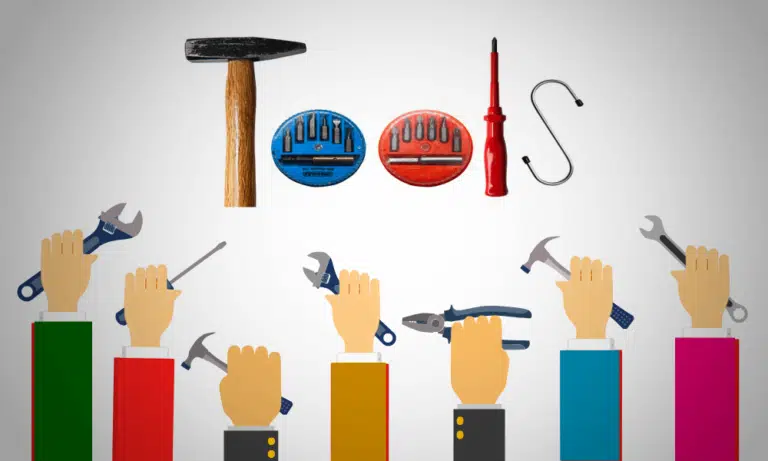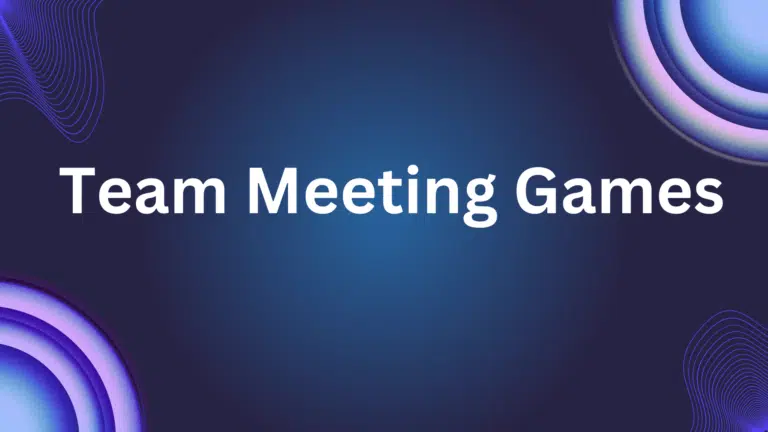The project management methodology determines how you plan, carry out, and wrap up your project.
There is a good chance you will choose one of these two project management methodologies for your undertaking: waterfall or agile.
In the first approach, one stage must be finished before moving on to the next, whereas in the second approach, each phase is carried out simultaneously.
Both of these methodologies play an important role in project management and are applied in a variety of settings. The requirements of the project should be taken into consideration when choosing a project management methodology.
What Is Waterfall Methodology?
This model for the management of projects follows a top-down linear pattern that is developed into various phases, with the conclusion of one phase marking the beginning of the next phase. Early on in the process, project managers will define the scope of the project, as well as the schedule and budget.
The term “waterfall” is used because this framework is constructed in a downward direction, similar to a waterfall.
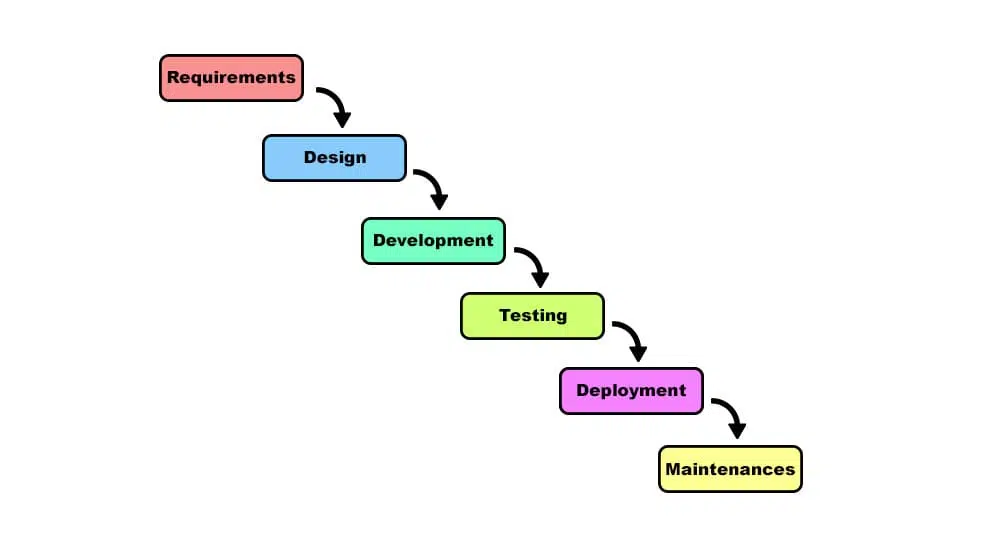
The phases in the waterfall methodology are
- Requirements
- Design
- Development
- Testing
- Deployment
- Maintenance
Requirements
This phase involves collecting product requirements from the client and documenting the project scope.
Design
Here, you develop the project’s blueprint, determine milestones, and decide strategies for carrying out the planned work. This phase provides an idea about the final product.
Development / Implementation
In this stage, the execution of the previously-planned milestones begins. The team of developers starts working on various components of the project.
Testing
Testing ensures the project is on the right track. Integration, performance, and stress testing can be done.
Deployment
Here, the final product is delivered for deployment.
Maintenance
Some projects have a clause for maintenance for a certain duration after the deployment. After this duration, the client can request further product maintenance. The maintenance includes regular troubleshooting to detect areas that need fixing or upgrading.
Benefits Of The Waterfall Methodology
Simplicity and Ease
The waterfall methodology offers ease of use to project managers and teams because it is uncomplicated, requires fewer resources, and is simple to plan, comprehend, and put into practice. Additionally, it is simple to manage because each stage has clearly defined review processes and output.
Improved Clarity
This model defines the scope in detail, stages, and roles & responsibilities, allowing the team to grasp and have in-depth knowledge of the project from the beginning as everything is laid out in great detail.
High Visibility
In the waterfall model, the project manager, clients, and team members can see the planned progress is being accomplished. This motivates team members to continue to perform better.
Time-Saving
The team members are aware of the work being completed and can track the progress; as a result, the project is carried out more efficiently, saving time.
Accurate Project Monitoring
Progress monitoring and management are accurate with good-structured documentation in the waterfall model. The documented scope statement is a baseline or reference to filter out irrelevancies.
Drawbacks of the Waterfall Methodology
Less Flexibility
Change is inevitable in projects of this complexity. Making modifications to the waterfall framework is a time-consuming and expensive endeavor. It is the responsibility of the project manager to submit a change request, which then undergoes the integrated change control process before being approved. After that, the project manager will update the project baselines as well as any documents that were affected by the project.
Unidentified Risks
If any unidentified risk occurs, it can affect the project objectives, and again it goes through the time-consuming change request approval process.
Start-from-Scratch Syndrome
The start-from-scratch syndrome is similar to creating a new wheel from scratch. Putting effort into something that already exists is a waste of time and other resources. For instance, constructing a plan or project document from scratch when there is already a suitable template available. In order to save time and effort, the project manager should make use of these templates when developing plans and other project documents.
Because each phase is dependent on the one that comes after it, even a minor adjustment can result in significant difficulties for later phases.
Not Good For Highly-Complex Projects
It is hard to assume fine details of every step in an early stage of a complex project, leading to difficulties in developing a detailed plan with no guarantee.
Less Stakeholder Interaction
With minimal customer interaction, deviation may result from an initial misinterpretation of a client’s requirements, leading to customer dissatisfaction.
Is Waterfall Right For Me?
You must consider carefully if the waterfall approach is right for your project. The waterfall methodology best suits projects with fixed requirements and fewer changes during the project life cycle.
Agile methodologies are best for projects with changing or unclear requirements.
What Is Agile Methodology?
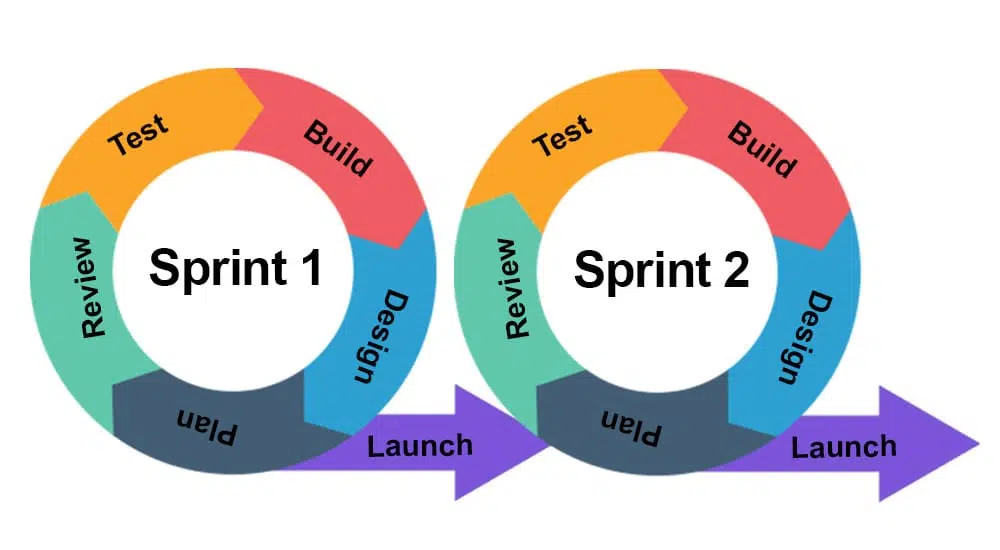
The rigid nature of traditional development methods such as the waterfall methodology inspired the development of a more flexible and adaptable agile methodology.
It is a malleable framework for project management that enables alterations to be made to the project at any point during the project’s life cycle. In this stage, the team members simultaneously work on various aspects of the project.
Core Principles Of Agile Development
The “agile manifesto” is written documentation of core agile principles. The 12 main principles of agile methodologies are as follows:
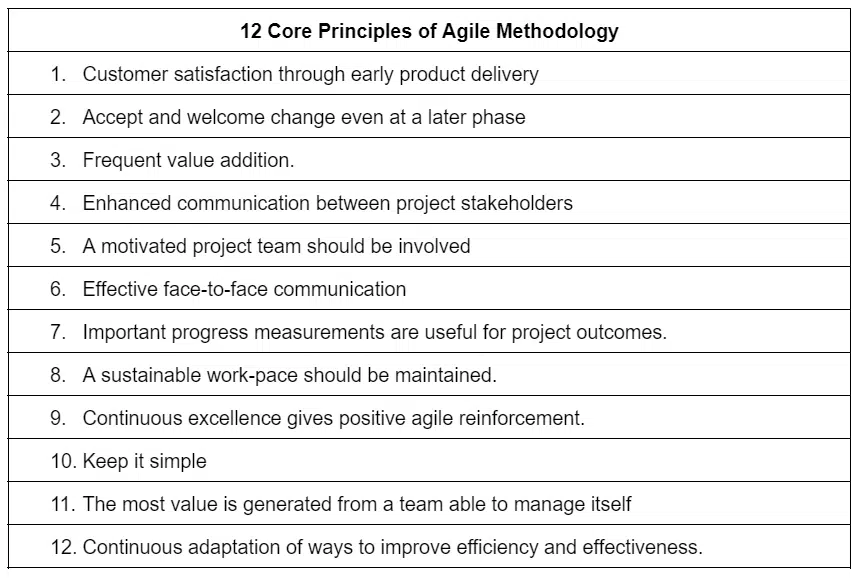
Agile methods have four main values:
Value 1: Flexibility Above Rigidity
Projects with flexible nature give room to adapt when a change is inevitable. This is opposed to a rigid project that can crash since they are not designed to accommodate continuous changes.
This principle stems from the fact that human wants are insatiable, so “change” will remain a constant factor in any project. Also, sometimes changes are good for a project even if they introduce in the final stage.
Value 2: Prioritizing Interactions Between Team Members, Stakeholders, And Project Managers Above Mere Tools And Processes
It has been discovered that a strong communication network between team members and project managers yielded better results because they could be better prepared and more proactive in resolving project issues. As a result, the new order calls for a shift away from the typical practice of project management, which is goal-oriented.
Because of this principle, team members are kept motivated through daily communication in an environment that is supportive and enhanced, which ultimately results in increased productivity and efficiency.
Value 3: Functioning Outcomes Above Excessive Documentation
In traditional methodology, a project manager could exhaust time to plan and document without considering the project’s commencement. Plans are necessary, but stakeholders don’t care till they see results. The agile methodology is goal-oriented and does not just wait till plans are perfected but begins the project and fine-tunes the plans as the project progresses.
Value 4: Enhance Customer Participation Above Simply Striking Deals
Traditional project management focuses on making strict deals on how a project would be carried out and delivering the final product. Agile has shifted focus to enhanced customer participation through the project’s lifespan to guarantee clients’ satisfaction as they are kept in the loop on every decision.
Benefits of Agile Methodologies
Shorter Turnaround Time
The agile method accomplishes tasks quicker and takes a shorter time to deliver the final deliverable.
More Flexible
Because this is such an important advantage of utilizing the agile methodology, it is impossible to place too much emphasis on this particular benefit. The adaptability of the agile framework, which allows for changes to be made without causing a disruption to the project, is the primary reason to choose this framework over others for projects with uncertain requirements.
Early Detection of Risks
Since constant planning goes on as the project proceeds; risks can be detected earlier and managed. This limits the need for an emergency response or workaround.
Quality Improvement
Regular testing, involvement of clients, and feedback consideration ensure a high-quality product with stakeholder buy-in.
Improved Communication and Interaction
It encourages frequent interaction between the project’s stakeholders, the project managers, and the team members. Better communication of both the project’s progress and the difficulties it has encountered is possible.
Drawbacks of Agile Methodologies
Time and Effort Spent On Making Changes
This drawback, in most instances, is unavoidable because team members may be working on different phases simultaneously, which could lead to overlap or cause errors.
The Cumbersome Task of Keeping Every Team Member Abreast
Because these workers probably focus on different phases simultaneously, it can be difficult to ensure that all team members are on the same page with the overall objective. There is a possibility of misunderstandings between team members, particularly when a new member is added to the team in the middle of the project.
Undefined Project Timeline
Agile methodologies do not develop an in-depth plan for the complete project. This makes it difficult to get the funds and resources since it is an ever-changing process.
Projects have an uncertain future because of unclear requirements. The lack of a concrete plan causes an undefined project timeline.
No Fixed Budget.
The lack of a defined plan makes it difficult to speculate on the project budget. This makes it difficult to get finances from investors.
Is Agile Right For Me?
Agile methodologies are frequently utilized in the process of software development, which is characterized by an ongoing change in the requirements and proposed solutions.
You have to evaluate the needs of the project, comprehend the structure of the organization, determine the expectations of the stakeholders, and, as a final step, examine the tools that are available.
Projects that want to use the agile methodology need to have these characteristics: speed, focus, and extensive collaboration.
Agile Vs Waterfall
The similarity between these frameworks is that they include similar processes like the collection of requirements, design, development, testing, and deploying.
However, below are a few differences between waterfall and agile frameworks.
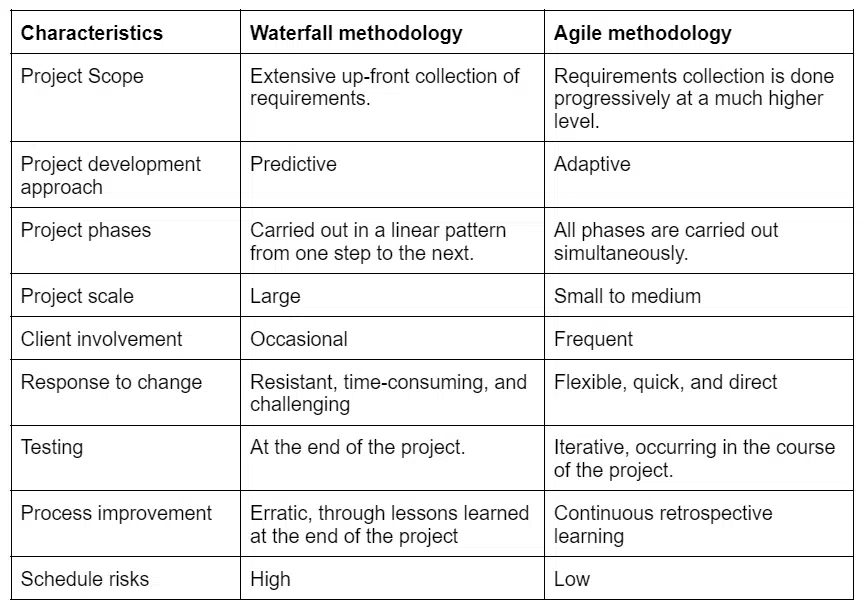
Conclusion
The two most important approaches to project management are called waterfall and agile, respectively. It is the decision of the organization and the project team to select suitable methodologies for their project.
The degree to which the customer is involved is an essential factor to consider when choosing between an agile and a waterfall framework.
The waterfall method is most effective for projects that have a well-defined work scope and call for the participation of a limited number of stakeholders. The agile methodology is well-suited for use in adaptable projects that call for the consistent and direct participation of clients.

I am Mohammad Fahad Usmani, B.E. PMP, PMI-RMP. I have been blogging on project management topics since 2011. To date, thousands of professionals have passed the PMP exam using my resources.

